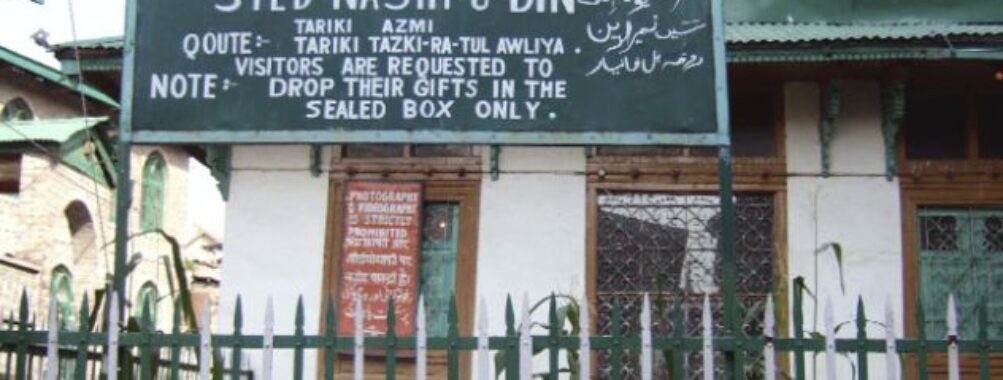
Roza Bal
Table of Contents There’s something quietly magnetic about the Roza Bal shrine in Srinagar. It’s not flashy or grand like some of the other religious sites in Kashmir, but that’s exactly what makes it so intriguing. Tucked away in the Khanyar quarter of the old city, this modest tomb carries an air of mystery that seems to hum beneath its stone walls. Many locals believe it’s the resting place of Yuz Asaf, a revered sage. Others, more controversially, claim it could be the final resting place of Jesus of Nazareth himself. Whatever your beliefs, it’s impossible to stand there and not feel the weight of centuries of faith, rumor, and wonder pressing gently against you. When I first heard about Roza Bal, I thought it was just another old shrine with a few legends attached. But standing there, surrounded by the narrow lanes of Khanyar, I realized it’s more than that—it’s a crossroads of stories, religions, and human curiosity. The shrine is small and unpretentious, with a simple structure and a peaceful courtyard. Pilgrims and travelers alike come here, some to pray, others to ponder the tale that has sparked debates for decades. The caretakers are friendly but protective of the site, and they’ll often tell you that the real story lies not in the theories, but in the faith of those who visit. Inside, the atmosphere is hushed and reverent. The air smells faintly of incense and old wood. You can sense the echoes of countless prayers whispered over generations. It’s one of those places where time seems to slow down, where you can almost hear history breathing. Whether you’re a believer, a skeptic, or just a curious traveler, Roza Bal invites you to pause and think about the stories we tell — and the ones we choose to believe. If you ask me, spring and autumn are the best times to explore Roza Bal. Around March to May, the air in Srinagar feels crisp but gentle, the kind of weather that makes wandering through the old city a pleasure rather than a chore. The surrounding streets are alive with color — fruit vendors, spice sellers, and the occasional call to prayer echoing through the alleys. Autumn, from September to November, carries a different charm: the chinar trees turn golden, and the soft light gives everything a nostalgic glow. Winter can be magical too, but the cold bites hard, and the lanes can get slippery after snow. Summer brings more tourists, so if you prefer quiet reflection, visit during the shoulder months. Early mornings are especially beautiful. The city is just waking up, and you can hear the faint hum of life beginning to stir. Visiting then gives you a chance to experience the shrine before the day’s bustle takes over. There’s something deeply personal about standing there in that stillness, watching the first rays of sunlight touch the ancient stones. Reaching Roza Bal is fairly straightforward once you’re in Srinagar. The shrine sits in the historic Khanyar area, which is part of the old city — a maze of narrow roads, traditional homes, and small shops selling everything from saffron to handwoven shawls. If you’re staying near Dal Lake or Lal Chowk, you can hop into a local auto-rickshaw or hire a taxi. It’s only a short ride, though traffic in the old quarters can get a little chaotic (and I mean the kind of chaos that’s oddly charming once you get used to it). For those who love walking, I’d actually recommend exploring on foot. The route winds through alleys lined with wooden houses and intricately carved balconies — a glimpse into the old soul of Srinagar. If you’re using public transport, shared minibuses often pass through the area, but they can be crowded. Hiring a local guide might also be worth it; not only do they help navigate the labyrinthine streets, but they often share fascinating stories that don’t appear in any travel book. Visiting Roza Bal isn’t just about sightseeing; it’s about respect. This is an active religious site, and modest clothing is a must. Cover your head if possible, and avoid loud conversations or photography inside the shrine. The caretakers are welcoming, but they value the sanctity of the place deeply. A simple greeting and a moment of quiet reflection go a long way here. Here are a few things I’ve learned (sometimes the hard way) that might help you make the most of your visit: One last thing — don’t rush it. The beauty of Roza Bal isn’t in its size or grandeur; it’s in the quiet moments it offers. Stand there for a while, listen to the murmur of prayers, and let your thoughts wander. Whether you leave convinced of its legends or not, you’ll carry away a story — one that feels deeply personal and strangely timeless. In a world that often moves too fast, Roza Bal is a gentle reminder to pause, breathe, and remember that history isn’t just written in books — sometimes, it’s whispered through stone.Description
Key Features
Best Time to Visit
How to Get There
Tips for Visiting
Location
Places to Stay Near Roza Bal
Find and Book a Tour
Explore More Travel Guides
No reviews found! Be the first to review!